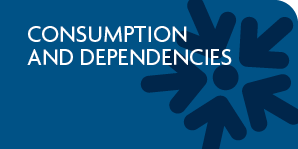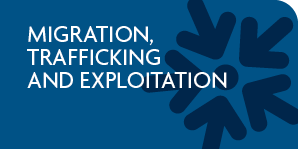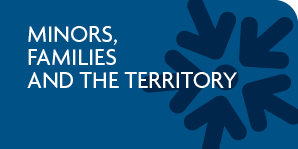
Projects
PROJECTS
AREA OF
Minors, families and the territory
|
Macondo - centre for children placed in the criminal circuit and at the risk of dependence 
SUMMARY rn Macondo, a specialized centre for minors, is a residential home that accommodates a maximum of eight children of both sexes, drug users, included in the criminal circuit. The project involves the formulation of individual psycho-educational courses designed to transform the criminal experience into opportunities for reflection and change. rn The project is articulated into different levels: rn - Development, starting with the re-signification of the crime, a specific path of education law. The development of an individual treatment plan that, starting from a multidisciplinary clinical evaluation, taking into account a comprehensive framework, and providing adequate medical support. rn - Psychopedagogic treatment, aimed at the reactivation and exploitation of familiar and social relationships, of which the teenager is influenced. rn - Activation of the territorial network in view of the definition, at the end of the permanence if the home, of a project to take care of services and follow-up. rn
rn NAME OF THE PROJECT rn MACONDO - Specialized centre for children involved in the criminal circuit and at the risk of dependence/addiction rn
rn RECIPIENTS rn Direct beneficiaries are the children placed in the criminal circuit and at risk of addiction. Indirect recipients are the families of users and the same local services that can take advantage of an important additional resource in dealing with complex issues of abuse and violation of criminal laws. rn
rn METHOD OF FINANCING rn National Fund for Anti-Drug Fight - Regione Lazio, year 2011-2012 rn
rn AREA OF INTERVENTION rn The centre is located within the district of Santa Maria della Pietà and hosts children from all over the region. rn
rn BRIEF HISTORY rn "Macondo" is a specialised residential centre addressed to Italian and foreign children of both genders, involved in the criminal circuit and at risk of addiction.This is the peculiarity of the centre defined as innovative and experimental. In fact, in the territory of Rome other specialized centres for children involved in the criminal circuit exist. However, even if they dealt with minors who abuse of substances, they do not have a specific mandate and expertise in this regard, like it is the case for this new centre. rn The project is funded by the Lazio region and operated by a partnership among ASL RMA, Parsec Cooperativ , Cooperativa Il Cammino.. rn The project has a duration of 21 months starting from 29/05/2011. rn
rn OBJECTIVES rn The project responds to the lack of specialized centres for minors involved in the criminal circuit and suffering from problems of abuse of psychotropic substances. rn The overall objective is the definition of individual treatment programmes that foster autonomy and social, school and working re-insertion of the young guests. rn • Development, since the re-signification of the offense, substance use and specific course of education to legality. rn • Development of an individual therapeutic project stemming from a multidisciplinary clinical evaluation. rn The objectives inherent in the specific intervention on minors add up to staff training and the dissemination of outcomes, which are most relevant in an experimental and innovative service, like the one proposed. rn
rn METHODOLOGY OF INTERVENTION rn While specifically addressing the issues related to deviant behaviour and drug use, the intervention aims at an overall and complex taking in charge of each guest, starting from the consideration of the criticality of the adolescent phase, a phase in which the individual - with the specificity of his/her social and family experience - is called to rebuild the image of him/herself and to confront with the demands of growing adult.In this framework, the therapeutic and possibly medical intervention is set in a larger educational pathway, of reception and containment, considering the consumption habits and deviance as a manifestation of an application that must be construed and then returned to the adolescent. rn The community context and the relationship between the children and the team are the foundation on which to build the intervention: the team gives the children the examples of figures that were absent or lacking in his/her life, offering models/roles on which to invest and identify themselves as reliable adults; the residential "container" offers daily elements and useful dynamics to re-interpret their behaviour according to the "as if" perspective. rn
rn TOOLS AND ACTIVITIES rn Each guest undergoes a clinical multidisciplinary evaluation through: rn • Medical Advice rn • Interviews with families rn • Group training modules and pedagogical experiences to enhance social skills. During these activities each guest has the chance to project his/her own feelings and thoughts in recreational-animation experience; through this "game", the adolescent directly experiences expression, cooperation, learning and socialization. In particular, we work on specific subjects, such as: rn - relations (affection, sexuality, empathy, the recognition of the other, communication, conflict management, the brokerages, trust) rn - change rn - nutrition rn • Inclusion in training programmes rn • Workshops aiming at affirming sharing as well as creativity, through photography, film forums, design of short films, the editors of a magazine. rn Where possible, support activities to parents are also proposed. The project proposes the reconstruction of family relationships which are functional to social re-integration of the adolescent. Interviews are conducted with the parent and/or with the couple and, if it deems appropriate, with the whole family. rn
rn The centre works closely with all the services of the Minor Justice Centre: First Reception Centres, Penitentiary Institute, Social Services' Office for Minors', Community Centres and the Social Private Centres. Continued and regular contact is kept with the Courts for Minors, the Territorial Services and, in particular, with the Public Service for Drug Addiction. rn
rn CONTACTS AND PROCEDURES FOR ACCESS rn Tel. (0039) 06.68352812-3894254961 rn E-mail: info@cooperativaparsec.it; centro.macondo@libero.it rn
rn Interested Services (CPA, IPM, Centro Giustizia MinorileTribunale, ASL RME/RMD, Comunità), shall contact the number 3476559930 or send an email to centro.macondo@libero.it in order arrange with the operators timeframes and modalities for access to the centre. Where possible, a preliminary contact with the child/adolescent is made before admission to the centre, in order to ease the transition from one service to the other. Attention is also paid to this phase through a significant transfer of information with the referring structures so as to ensure the continuity in the treatment. rn
rn ORGANIZATIONAL STRUCTURE rn The team shall take action according to a shared and integrated way of working and it avails of the expertise of occupational therapists, psychologists and social workers.It consists of three managers, one coordinator, one project manager, eight operators, one supervisor, one doctor, one nurse and consultants for training and evaluation. rn
rn EVALUATION rn The project uses an internal evaluation, on the process and the outcome, conducted by an external evaluator, as well as an external assessment conducted by the Department of Epidemiology of the Regional Health Service, which is mandated to carry out the evaluation system of activities as part of projects financed by the National Fund to Fight Drugs. rn
|






